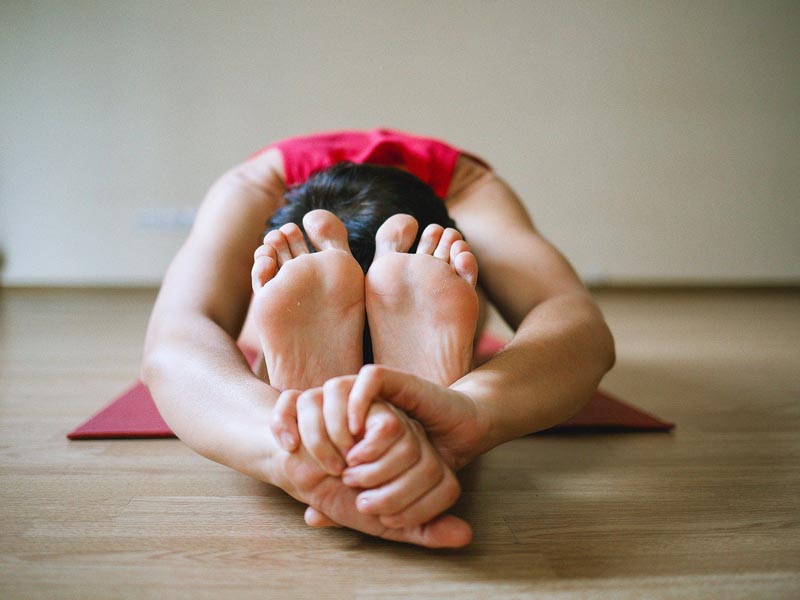Yoga for memory and concentration: Yoga improves your physical, and mental health, and well-being adding great value to the quality of your life. With the help of these few asanas, pranayama and meditation techniques, you can surely improve your concentration levels.
Yoga which is easily accessible to everyone may well be the elixir for youth and vitality. A dynamic process, this ancient science aids in the boosting brain function while also providing you with innumerable physical benefits. Yoga practices of asanas, pranayama and meditation impact the central nervous system, endocrine system, circulatory system, respiratory, cardiovascular and digestive systems etc. boosting overall development of the individual.
Yogic lifestyle changes that help during exams :
- Get up early in the morning and sleep early in the night. The first step is enough sleep. Ensure you complete your sleep quota of about at least 6 to 8 hours every day.
- Eat healthy foods especially during exams. Sattvik diet of whole grains, fresh fruits and seasonal vegetables help a lot. Chew your food properly. Do not overeat since it leads to lethargy. Avoid fried foods, fast foods and spicy foods. Eat home-cooked meals. Include some dried fruits like almonds, pine nuts, walnuts in your daily diet.
- You can enhance your coordination skills with the help of yoga asana practice. This also improves your creative abilities.
How to do Super Brain Yoga
- Stand tall and straight with your arms by your side.
- Lift your left arm and hold your right earlobe with your thumb and index finger. Your thumb should be in front.
- Lift your right arm and hold your left earlobe. Your right arm should be over your left arm.
- Inhale deeply and squat down slowly to a sitting position.
- Stay in this position for 2-3 seconds.
- Gently exhale as you rise again. This completes one cycle.
- You may repeat this cycle about 15 times every day.
Benefits of Super Brain Yoga
Super Brain Yoga activates acupuncture points on the earlobe that stimulate your gray matter. This exercise helps your brain by:
- Synchronizing left and right side of the brain.
- Distributing energy levels and inducing calmness.
- Stimulating thinking capacity.
- Increasing mental energy.
- Making you more creative.
- Developing cognitive powers.
- Improving focus, concentration and memory power.
- Boosting decision-making skills.
- Relieving stress or behavioral problems.
- Making you more psychologically balanced.
This brain exercise is known to help patients with Alzheimer’s, mild depression, Attention Deficit Hyperactivity Disorder (ADHD), Down’s syndrome, autism, and dyslexia among others.
One of the key tenets of yogic asanas practice is that to control the mind, you must first control the body.
Paschimottanasana (Seated Forward Bending):
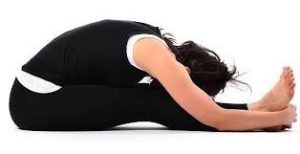
- Begin with Dandasana
- Keep your knees are slightly bent
- Lift your arms up and keep your spine erect
- Exhale and empty your stomach of air
- Bend forward at the hip as you exhale and place your upper body on your lower body
- Lower your arms and grip your big toes with your fingers
- Try to touch your knees with your nose
- Hold the asana for a while
Paschimottanasana calms the brain and helps relieve stress and mild depression.
Bakasana (Crane Pose):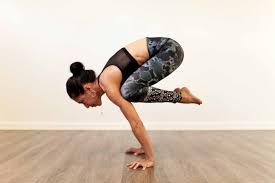
- Begin with Samasthithi
- Place your palms flat slightly ahead of your feet but away from them
- Point your fingers forward spreading them apart
- Bend your elbows slightly and place your knees just below your armpits
- Lean forward in such a way that all your body weight shifts to your arms
- Balance and slowly lift both your feet off the ground. Bring your feet together
- Straighten your arms as much as possible
- Focus at a point and hold this asana for a while
Crane pose can strengthen the arms, wrist and back body.
Sirshasana (Headstand Pose):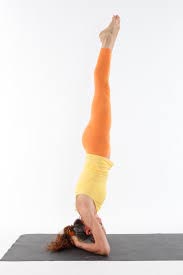
- Begin by assuming Vajrasana
- Place your elbows on the ground
- Form an equilateral triangle with your interlocked palms and elbows
- Place the crown of your head on the floor in front of your palms
- Your palms should act as a support to the back of your head
- Walk on your toes towards your head until your back straightens
- First lift your right leg up and align it with your upper body
- Use your core strength, balance and lift your left leg up
- Join your legs and point your toes down
- Stay in the pose as long as you are comfortable
Headstand can help you relieve stress and improve focus.
Padmasana (Lotus Pose)
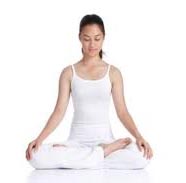
- Sit on the floor with legs stretched out and spine erect.
- Bend your right knee and place it on your left thigh.
- The sole of the right foot should face upward and the heel closer to the abdomen.
- Repeat the same procedure with the other leg.
- Now, place your hands on the knees in mudra position.
- Keep your head straight and breathe gently.
- Repeat the posture with the alternate leg as well.
Padmasana relaxes your mind and reduces muscular tension.
Vriksasana (Tree Stand Pose)
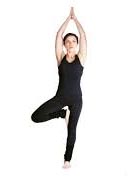
- Stand in Tadasana on an even surface.
- Stretch your hands up in the air and bring them down.
- Fold your left leg from the knee and place it on the inner side of your right thigh.
- Look straight. Join your palms together in prayer position and place them in front of your chest.
- Close your eyes and relax.
Sukhasana: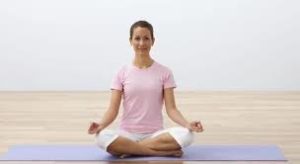
- Sit on the floor with your legs spread straight in front of you.Bend your left knee and fold it in such a way that the sole of your left foot is placed on the inner side of your right thigh.
- Bend your right knee in such a way that the sole of your right foot is placed on the outer side of your left calf muscle.
- Though not important, it is advisable to sit on a slightly elevated platform, like a folded yoga blanket, so that the spine continues to ascend and the knees point lower.
- Place your hands on your knees. Keep your back straight and erect. Close your eyes and relax.
This is the best asana to relax your mind, body and soul.
Precautions:
- Asanas should be practice in empty stomach.
- Best time to practice in the morning & evening
- Avoid during Menstruation cycle period.
- Practitioners should be practice under provision of experts
- Avoid during pregnancy.
You should practice these asanas in open and ventilated place .
 |
Dr. Sujata Panda, PhD in Yoga, DNYS, N.D., Gold medallist, Founder of Su-Ham Foundation Owner of Viroga Virtual Clinic |


